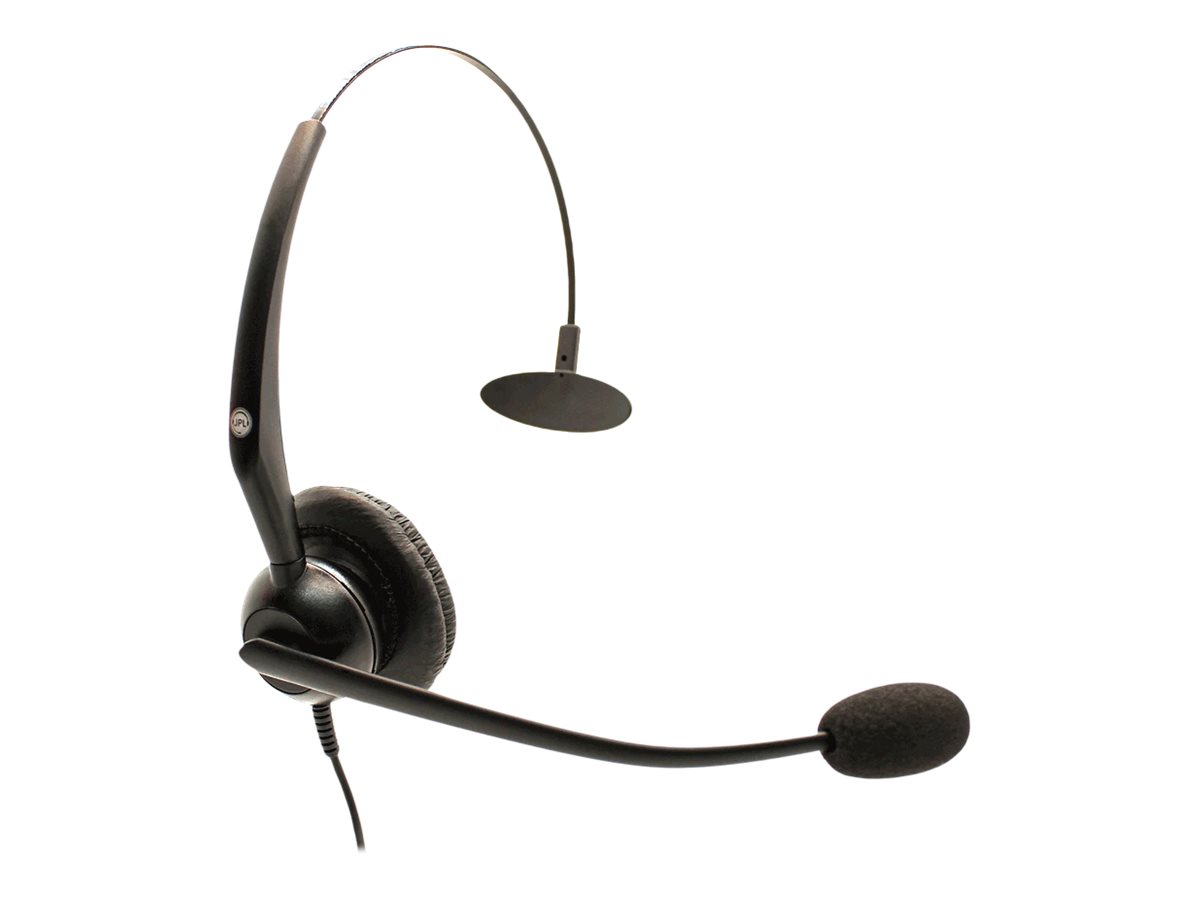
Complete technical specifications, details, expert ratings and review of JPL Telecom JPL-100-PM. Find out how your chosen headphones stack up against the competition and whether they are the ones that best meet your expectations with the headphone comparison feature.
design and dimensions sound quality microphone cable connections others
| DESIGN AND DIMENSIONS JPL Telecom JPL-100-PM |
|---|
| Product Type | Headset - wired - Quick Disconnect | |
|---|---|---|
| Weight | 64 g | Better than 85 % of headphones rated. |
| Recommended Use | Phone |
The JPL Telecom JPL-100-PM are wired headphones. In the case of studio and professional DJ headphones, a wired connection is a standard and a necessity. In this case, connecting via cable reduces audio transmission delays and prevents unwanted battery drain as it would be in case of wireless headphones. The same is de facto true for gaming headsets. In case of headphones for normal music listening, the cable is rather a relic, although it still has its fans. However, the wireless option is much more popular for everyday use in today’s world.
The headphones are designed as on-ear. On-ear headphones are generally lighter. However, their design has fewer isolation capabilities, and therefore, for example, more sound can be let in and out compared to around-ear headphones. The weight of the headphones is 64 g.
| SOUND QUALITY JPL Telecom JPL-100-PM |
|---|
| Headphones Form Factor | On-ear | |
|---|---|---|
| Adjustable Headband | Yes | |
| Connectivity Technology | Wired | |
| Sound Output Mode | Mono | |
| Frequency Response | 300 - 3400 Hz | Worse than 98 % of headphones rated. |
| Max Input Power | 80 mW | |
| Impedance | 150 Ohm | |
| Max Sound Pressure | 94 dB | |
| Diaphragm | 55 mm | Better than 98 % of headphones rated. |
| Features | Surround Shield |
The sound quality can be affected by many factors. When it comes to frequency range, the wider it is, the more detail you will hear when listening. However, the range a person can perceive is highly individual. The average person is able to perceive frequencies in the range of 16 to 20 000 Hz. So the most common frequency range you will see on the market is 20 to 20,000 Hz. Lower frequencies up to approximately 256 Hz are considered bass frequencies. Therefore, the lower the bottom value is, the better the headphones will reproduce bass. Conversely, values from approximately 2 048 Hz upwards are treble. That is why headphones with a high upper value will provide a much more accurate reproduction of high notes. JPL Telecom JPL-100-PM offers a frequency range of 300 - 3400 Hz. Overall, these headphones can reproduce sound up to 94 dB. However, be careful. Repeatedly playing music continuously at really high volumes can damage your hearing.
The device connected to the headphones also plays a role most times. The lower impedance value (approximately 100 to 150 Ohms) is suitable for playback from mobile phones, laptops or other portable players that do not have a powerful enough amplifier. The lower impedance will ensure that the required volume level is achieved with less power, thus extending the life of the player. However, at the same time, with lower impedance, there is more distortion of the sound. Headphones with a higher impedance of around 250 Ohms and above are then more suitable for playback from really powerful signal sources or using a headphone amplifier, otherwise the sound coming out of them might not be loud enough. At the same time, higher-impedance headphones will also ensure less distortion in the sound. In the case of these headphones, the impedance reaches the 150 Ohm value. The maximum input power of these headphones indicates how many decibels they can receive from the device without any damage. For JPL Telecom JPL-100-PM, it is 80 mW.
An important part of these headphones is the diaphragm, which, simply put, converts the electrical signal into a sound. The thin diaphragm that is around 6 mm thick can react quickly to changes in the audio signal and improves high-frequency listening. However, it is less sensitive to bass. The medium-thick diaphragm of around 10 mm provides a fairly balanced sound profile, allowing you to enjoy both bass and treble. A thicker diaphragm of around 20 mm cannot react so quickly to changes in the sound signal, thus impairing bass listening. However, it is more sensitive to higher frequencies. This model features the 55 mm.
| MICROPHONE JPL Telecom JPL-100-PM |
|---|
| Type | Boom | |
|---|---|---|
| Frequency Response | 100 - 10000 Hz | Better than 58 % of headphones rated. |
| Sensitivity | -43 dB | |
| Impedance | 3.9 kOhm |
JPL Telecom JPL-100-PM has a boom–type microphone. The microphone sensitivity is -43 dB. A lower microphone sensitivity will generally ensure that even quieter sounds are caught. On the other hand, in noisier environments, distortion of the recording may occur. With a higher sensitivity, the microphone will not distort the recording even in noisy environments. On the other hand, the microphone will not pick up quieter sounds. So it depends on the environment and the purposes you plan to use the headphones for.
Show more| CABLE JPL Telecom JPL-100-PM |
|---|
| Cable Type | Headset cable |
|---|
| CONNECTIONS JPL Telecom JPL-100-PM |
|---|
| Connector Type | Headset (Quick Disconnect) |
|---|
| OTHERS JPL Telecom JPL-100-PM |
|---|
| Included Accessories | Clothing clip, ear cushion (foam), Quick Disconnect adapter | |
|---|---|---|
| Service & Support | Limited warranty - replace or repair - 1 year |
Similar Headphones
Other JPL Headphones